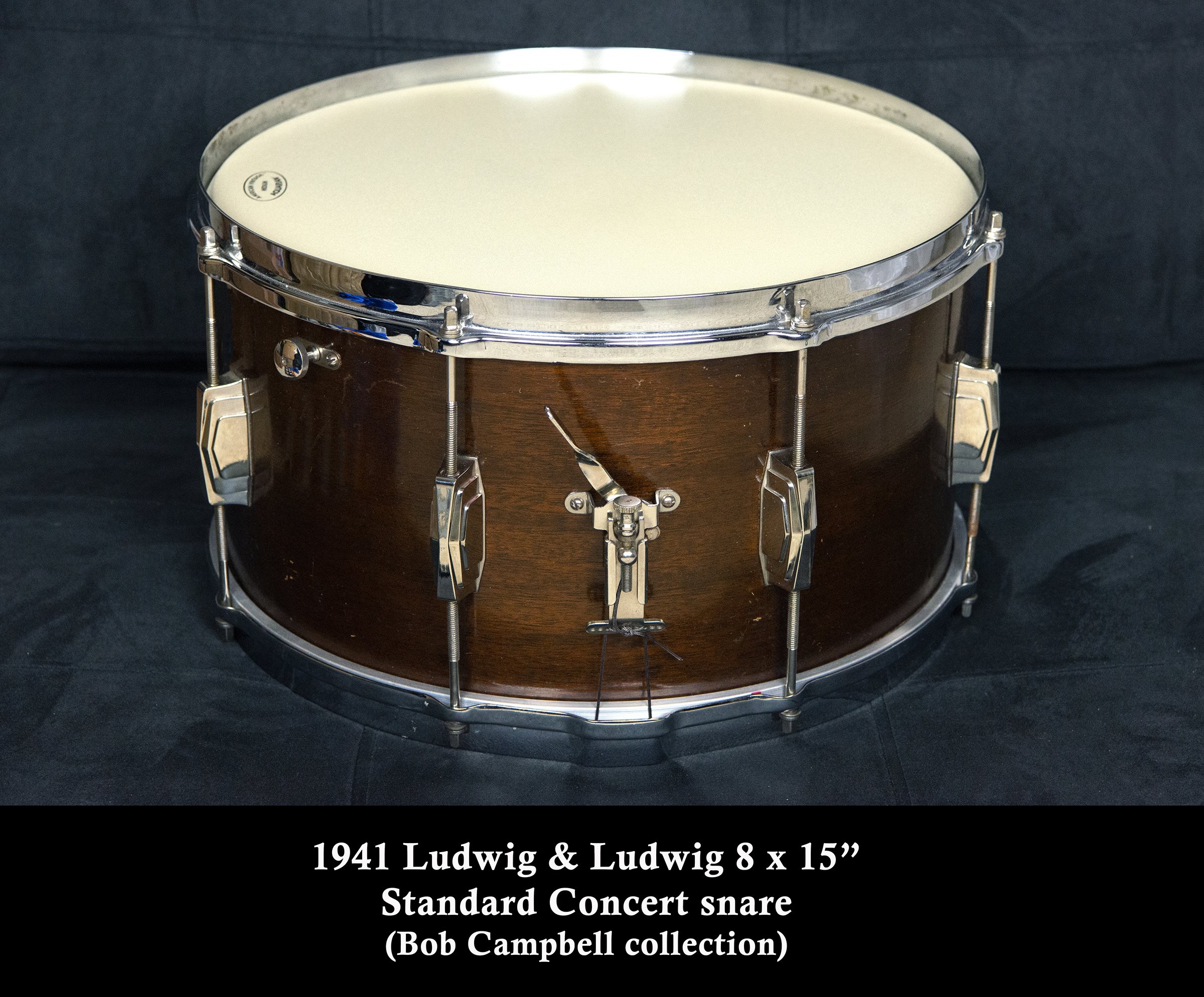
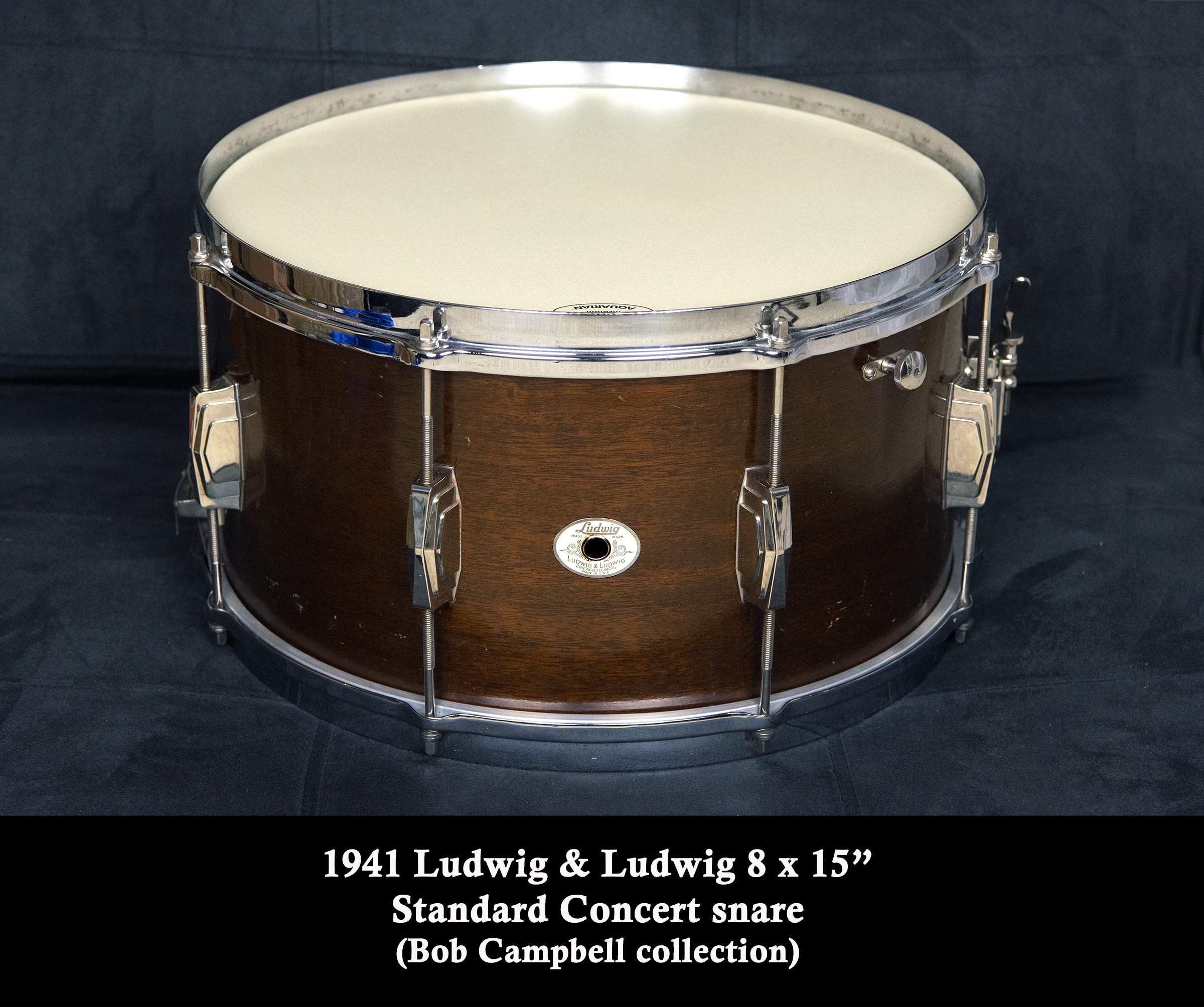
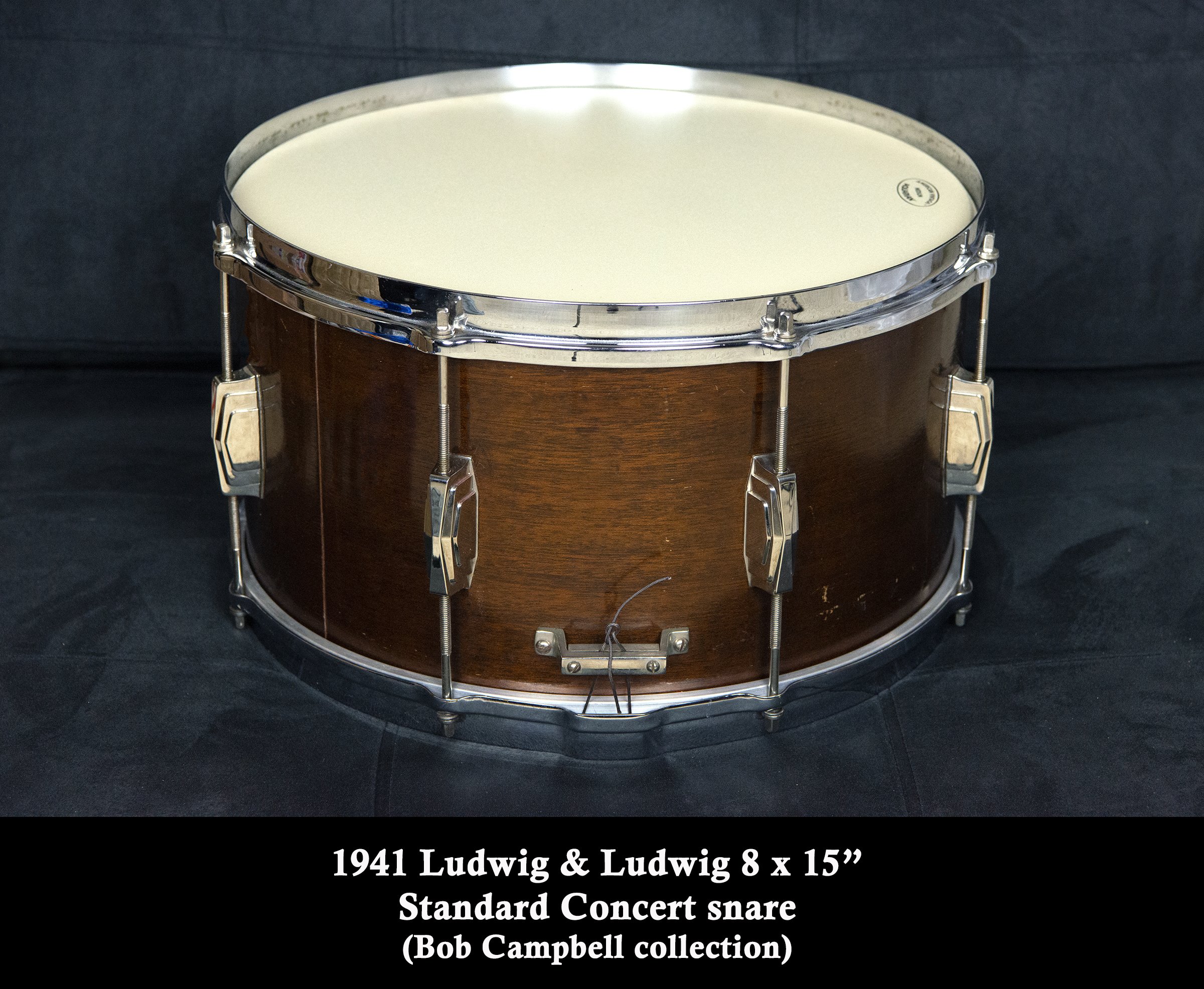


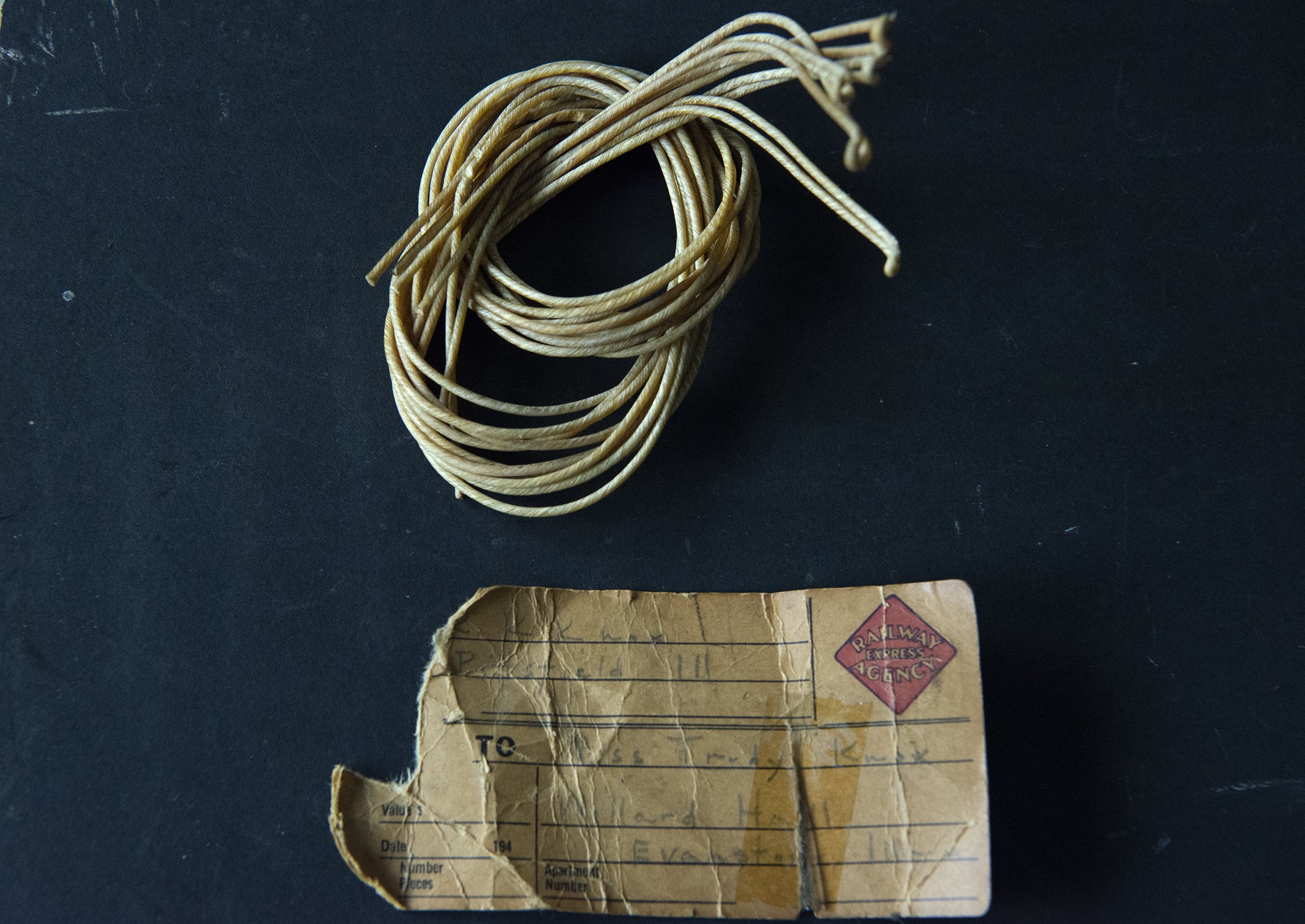
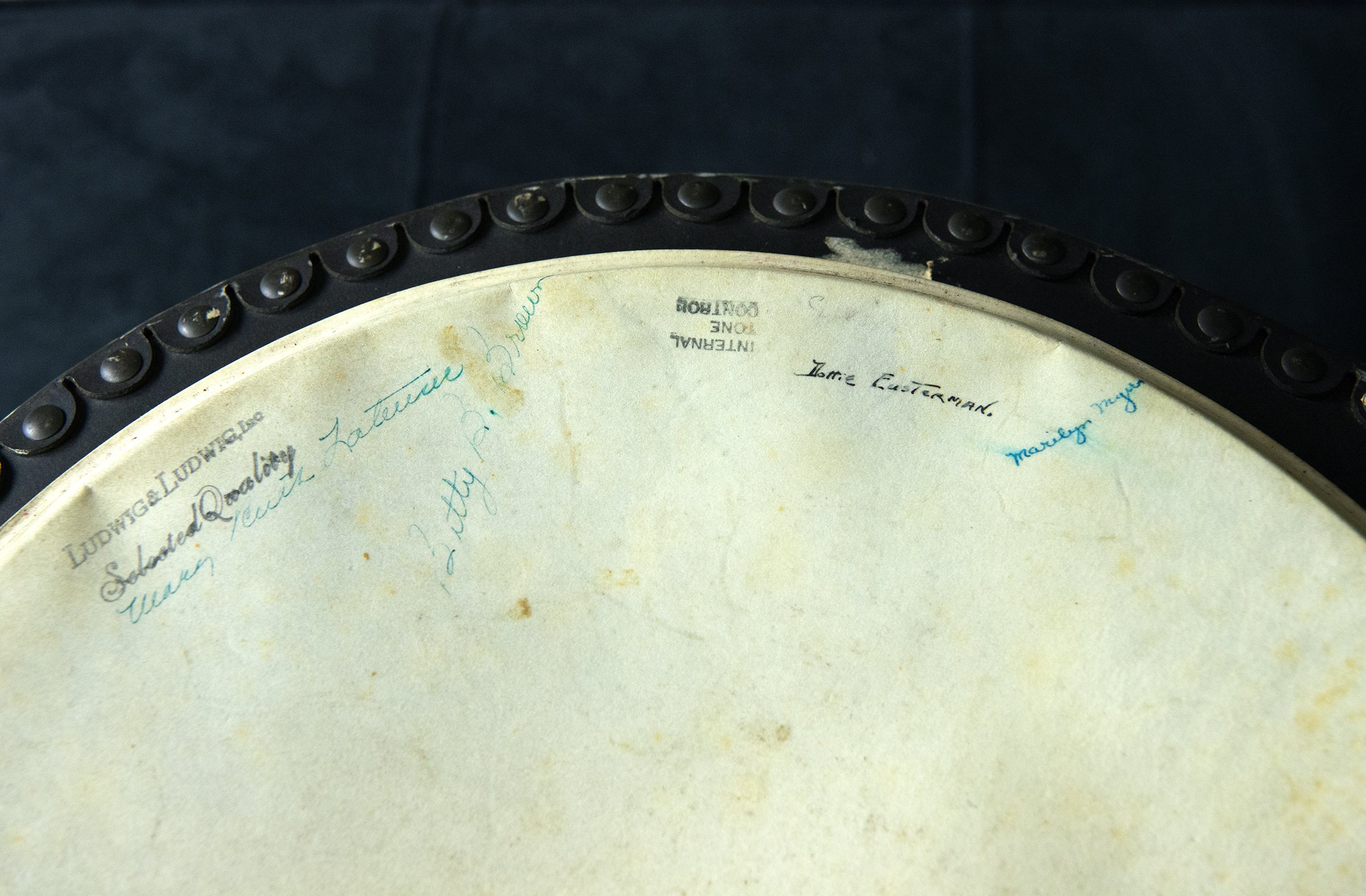
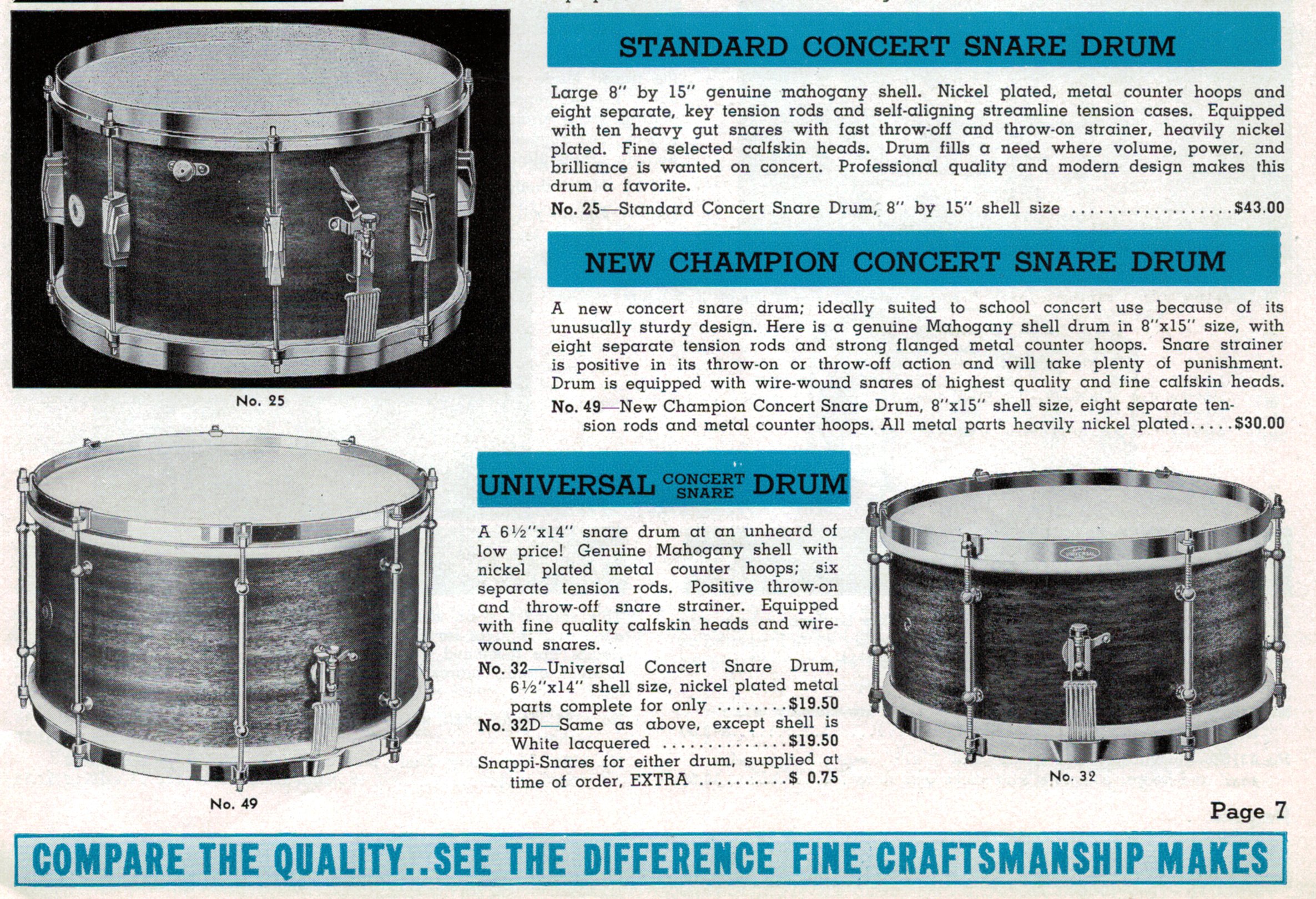
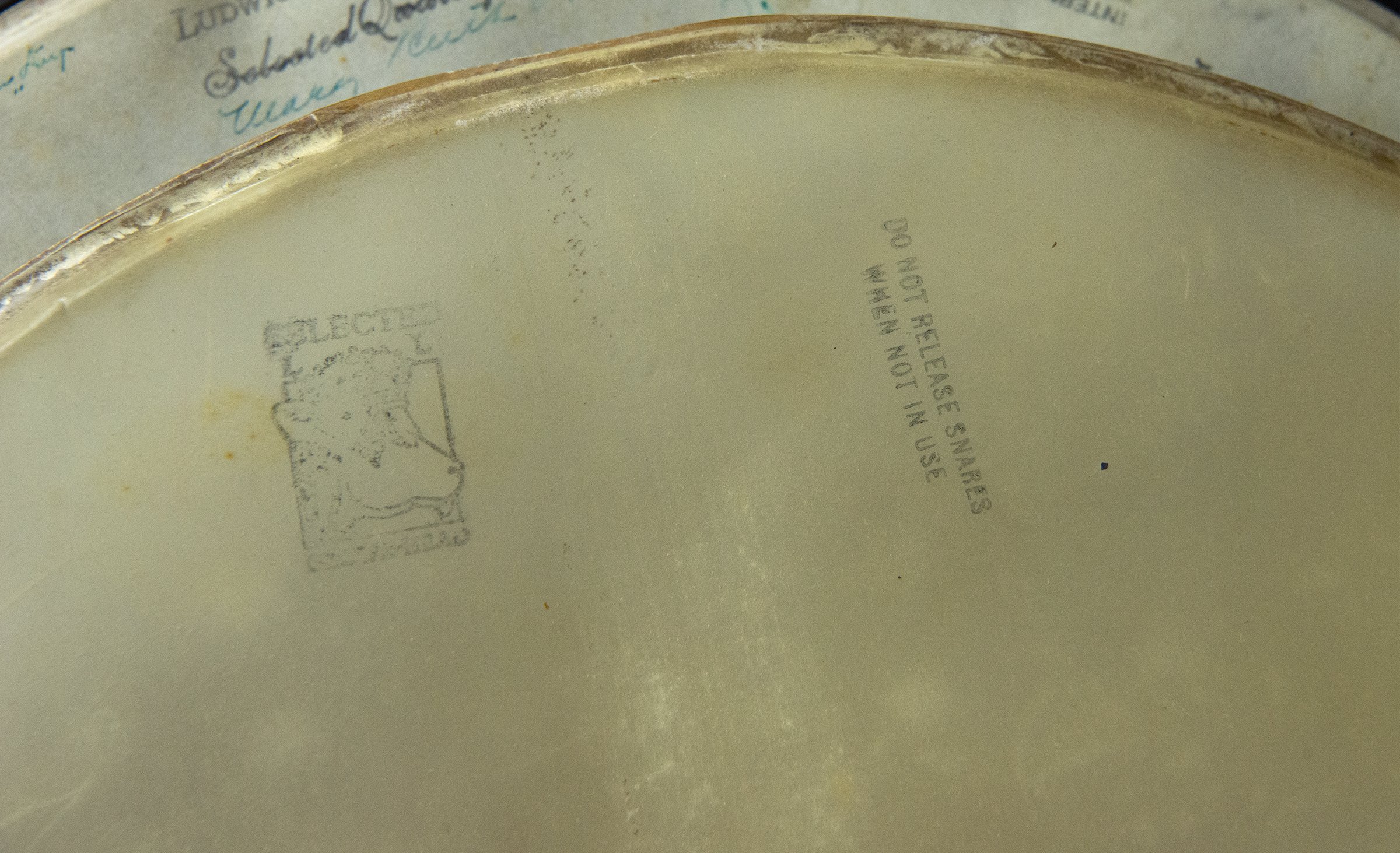
The year 1941 was momentous in American history, perhaps known best for the December 7th bombing of Pearl Harbor which provoked the U.S.A. into declaring war on Japan. Earlier in the year, American citizens were doing their best to prepare for war, but mostly hoping to avoid it. They were distracted by more pleasant events, such as the release of Captain America Comics #1 (the first Captain America & Bucky comic), listening to the first licensed commercial FM radio station (W47NV, Nashville), the opening of the National Gallery of Art, and the premier of Orson Welles’ film, “Citizen Kane”. To quote Charles Dickens, “It was the best of times; it was the worst of times.”
Despite it all, American music continued to flourish, with great hits like Chattanooga Choo Choo (Glenn Miller), Stardust (Artie Shaw), Boogie Woogie Bugle Boy (The Andrews Sisters), and Take the ‘A’ Train (Duke Ellington). Ludwig & Ludwig Incorporated had been sold a decade before, by founder Bill Ludwig, to C.G. Conn and continued to support the percussive needs of a thriving music industry. Eighty years passes…
A short while ago, I was contacted by a talented drummer by the name of George Sluppick on Instagram. It turns out he had a Ludwig drum from the 1940’s which he wanted to identify and might consider selling. He got the drum from a shop called Lollipop Music in Princeton, WV. They got the drum from a guy who bought it from a pawn shop. So unfortunately, no identity of the original owner. I was still determined to find out more…
After looking through the pics, it seemed like George had a beautiful 1941, 8 x 15” Ludwig & Ludwig snare with a mahogany shell. I asked him to confirm the dimensions because they were not very common for that time. Indeed, it was 8 x 15”. Looking through my Ludwig & Ludwig 1941 catalog, I found a match – only offered in an 8 x 15” size, a Standard Concert model snare drum. It was described as a “Large 8 x 15” genuine mahogany shell. Nickel-plated, metal counter hoops and eight separate, key tension rods and self-aligning (i.e., with inserts) streamlined tension cases. Fine selected calfskin heads. Drum fills a need where volume, power, and brilliance is wanted in a concert. Professional quality and modern design make this drum a favorite.”
George’s drum looked to be in exceptional condition with the nickel shining brilliantly and the original lacquer intact. There were a few minor nicks here and there, but it was overall in tremendous condition. While not stated in the catalog, the shell looked to be 3-ply mahogany with maple re-rings. It had a white oval Ludwig & Ludwig badge (Chicago, IL) and what appeared to be a 1941 date stamp inside the shell. George put modern heads and wires on the drum but had kept the original calfskin, marked “Ludwig & Ludwig Selected Quality”. The top head had several signatures in ink that were women’s names (I could not clearly read all of them). He also had kept the gut snares which were in superb shape. Old Ludwig mahogany snares sound like no other – warm, deep, and sensitive – I was sold.
The drum arrived in what looked to be the original fiber case with various travel stickers, including a 1940’s railway tag addressed to Miss Trudy Knox, Willard Hall, Evanston, IL. It was sent by “R.K. Knox” from Pittsfield, IL. There was another tag which faintly looked like it was dated 1945. I did some internet sleuthing and found that there was a Willard Hall at Northwestern University in the 1940’s. Willard Hall (Frances Willard was social reformer from the 1800s) was built in 1938 to house freshman women. Given that all the signatures on the drumhead seemed to be female, perhaps these were fellow students from Willard? Digging a little further, I did find a Trudy Knox in the 1947 Northwestern yearbook. I later found an obituary for a Dr. Trudy Knox (8/11/1926 – 6/24/2014), who had grown up in Pittsfield, IL, received a Bachelor’s degree from Northwestern and had a father named Raymond K. Knox (deceased).
I did try to contact two of the living relatives to no avail.Unfortunately, we may never know why Trudy had this lovely drum.Perhaps it is in such good condition because she tried drumming in school and decided it was not for her.I am thankful that she kept the drum and it survived in such good condition.I am thrilled to play such an instrument of the 1940’s.It truly sounds lovely.As described, it does indeed have “volume, power and brilliance.”If I am ever contacted by any of Trudy’s relatives, I will be sure to update this

